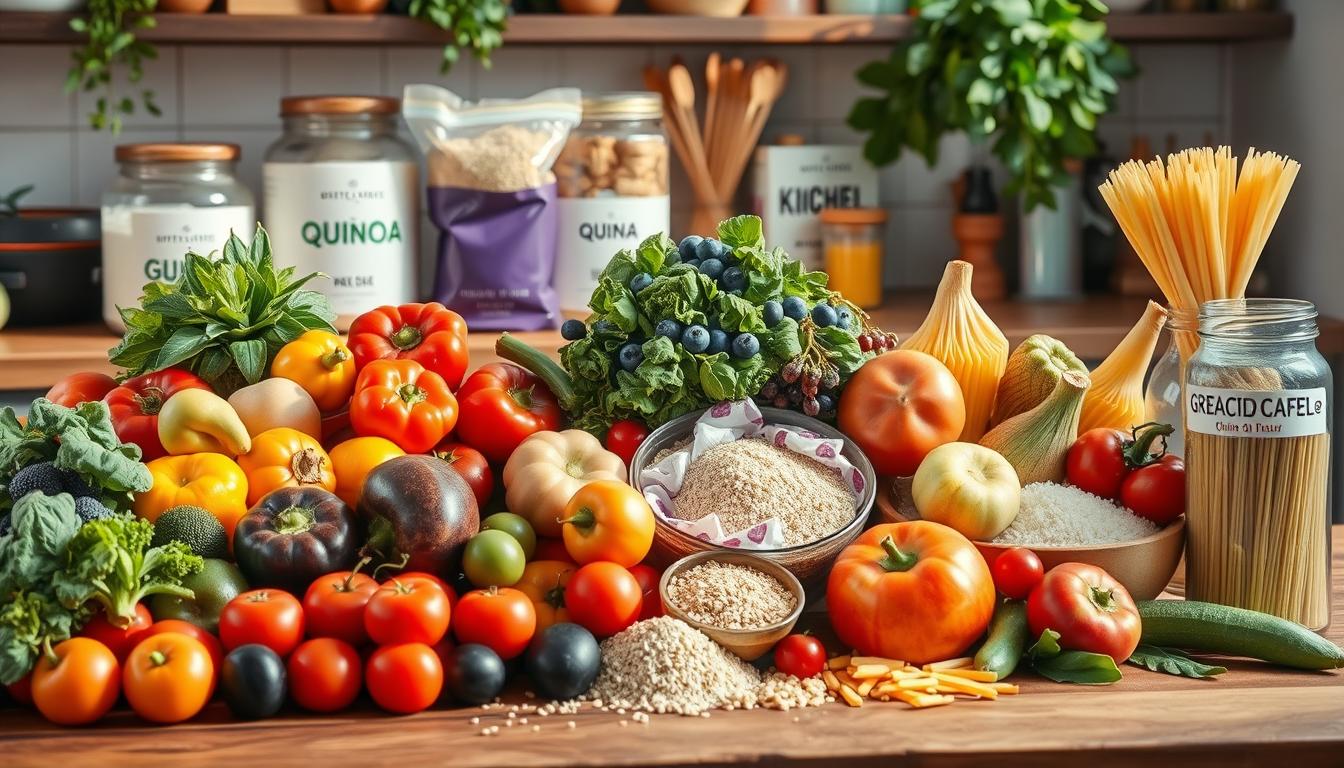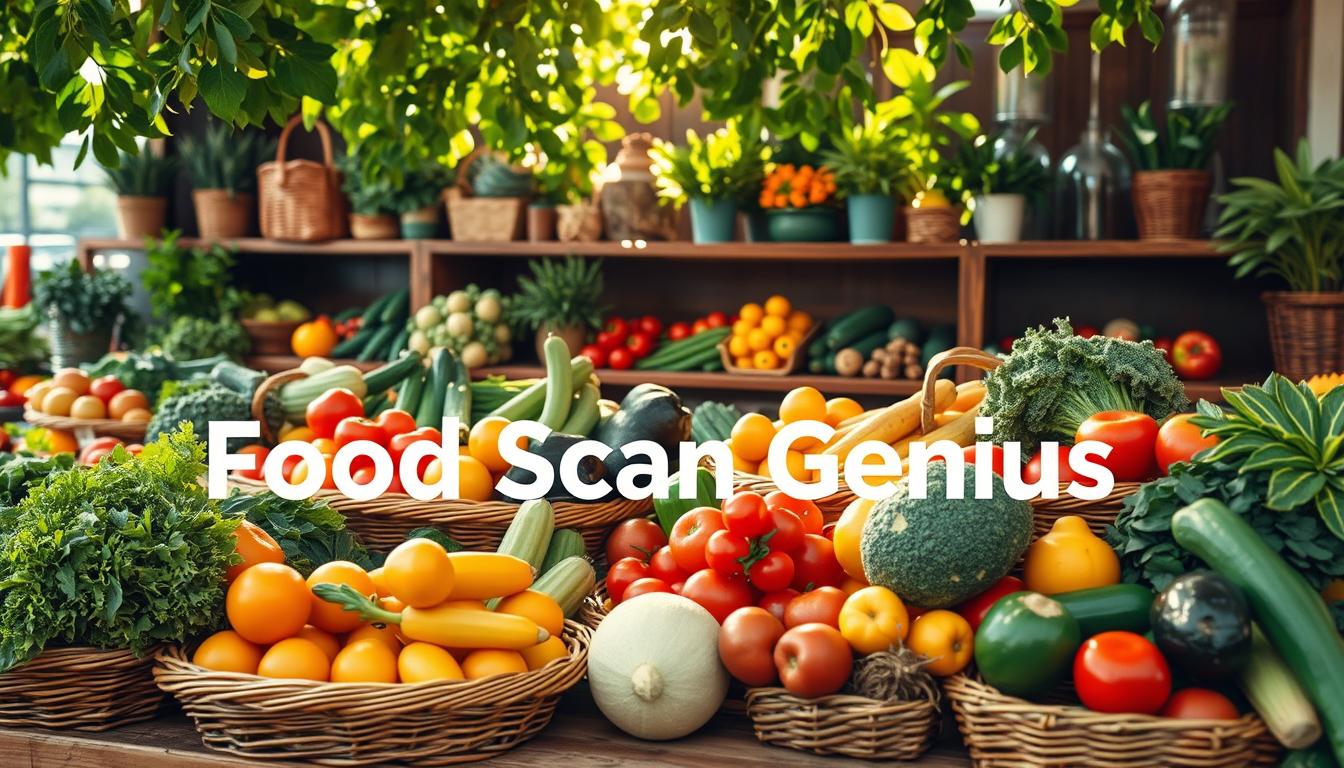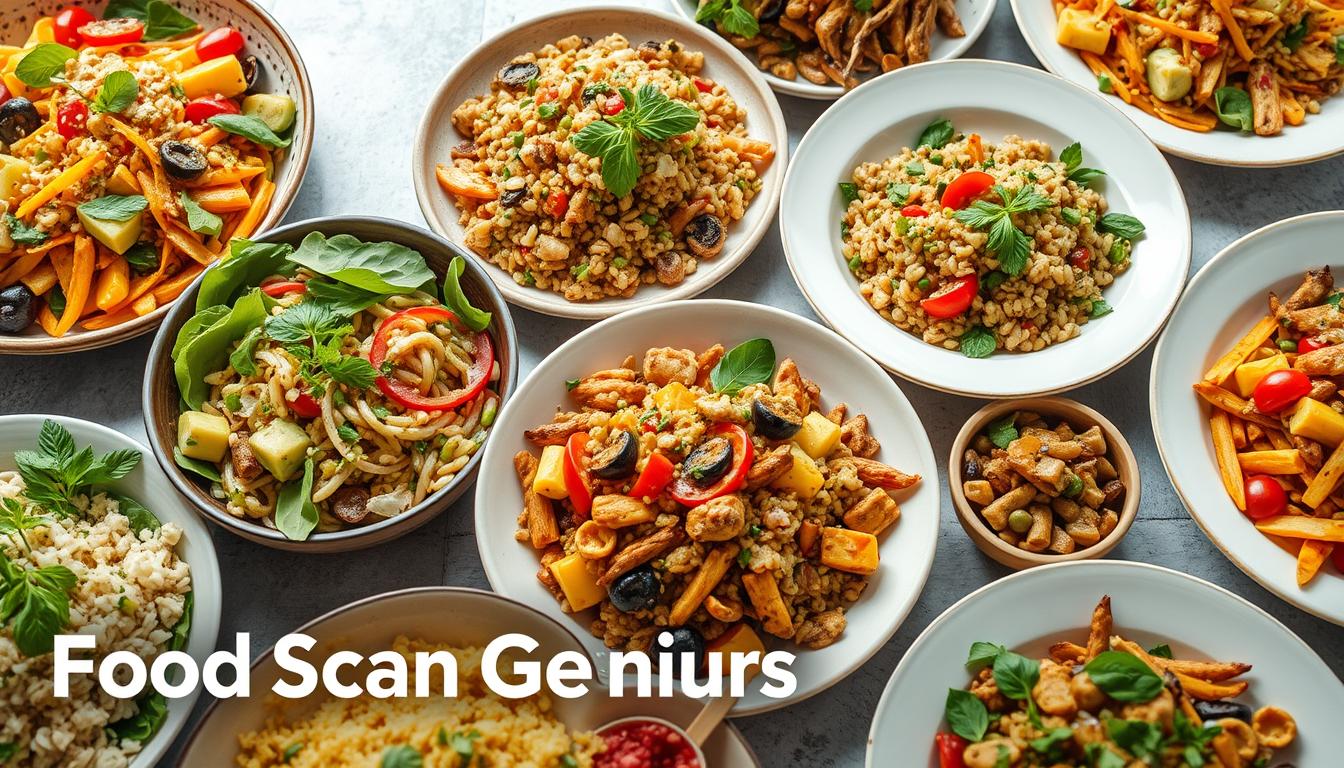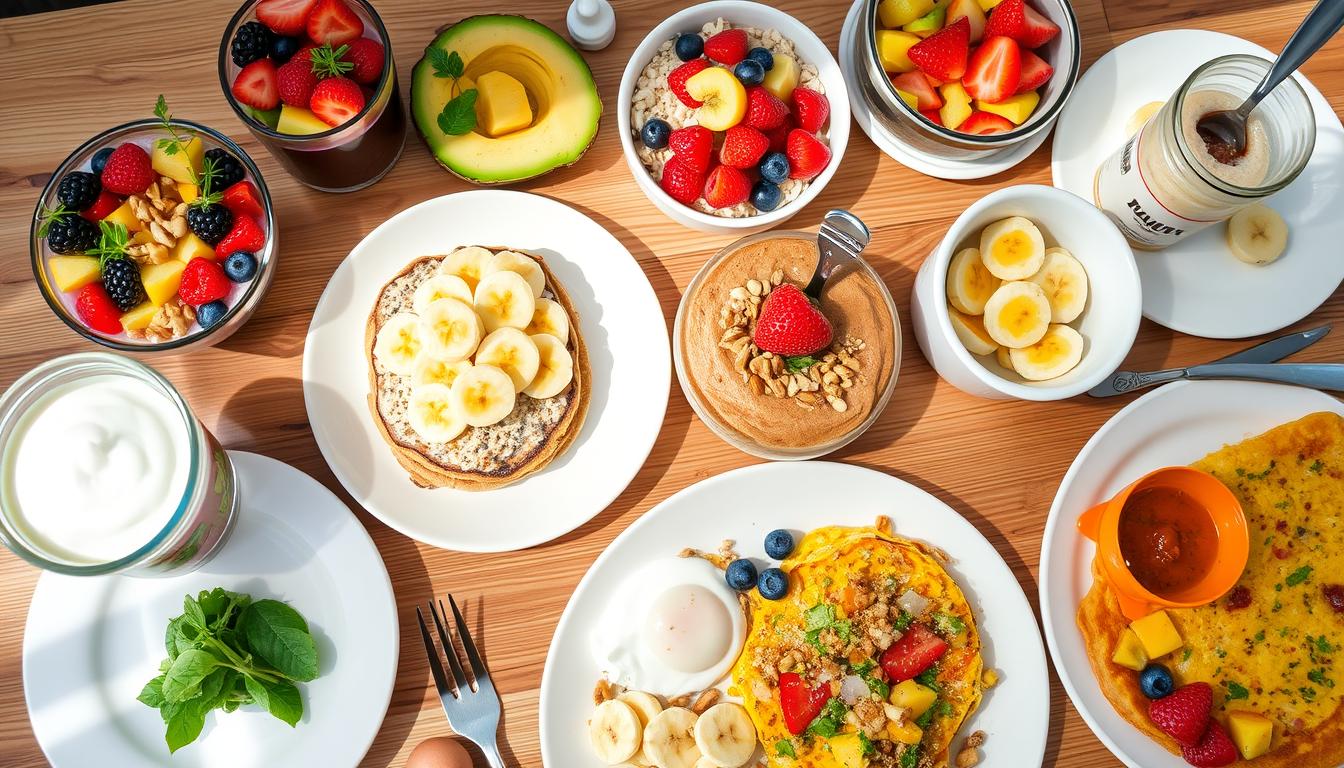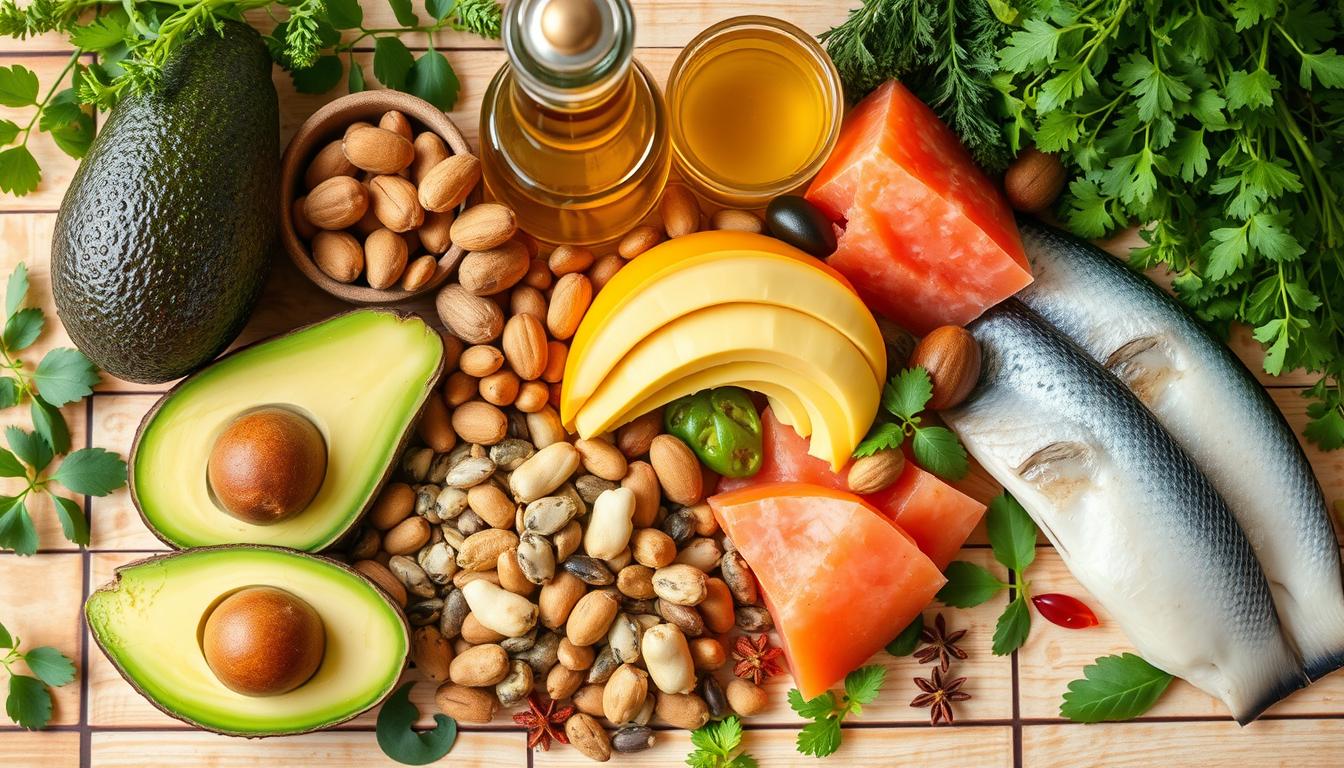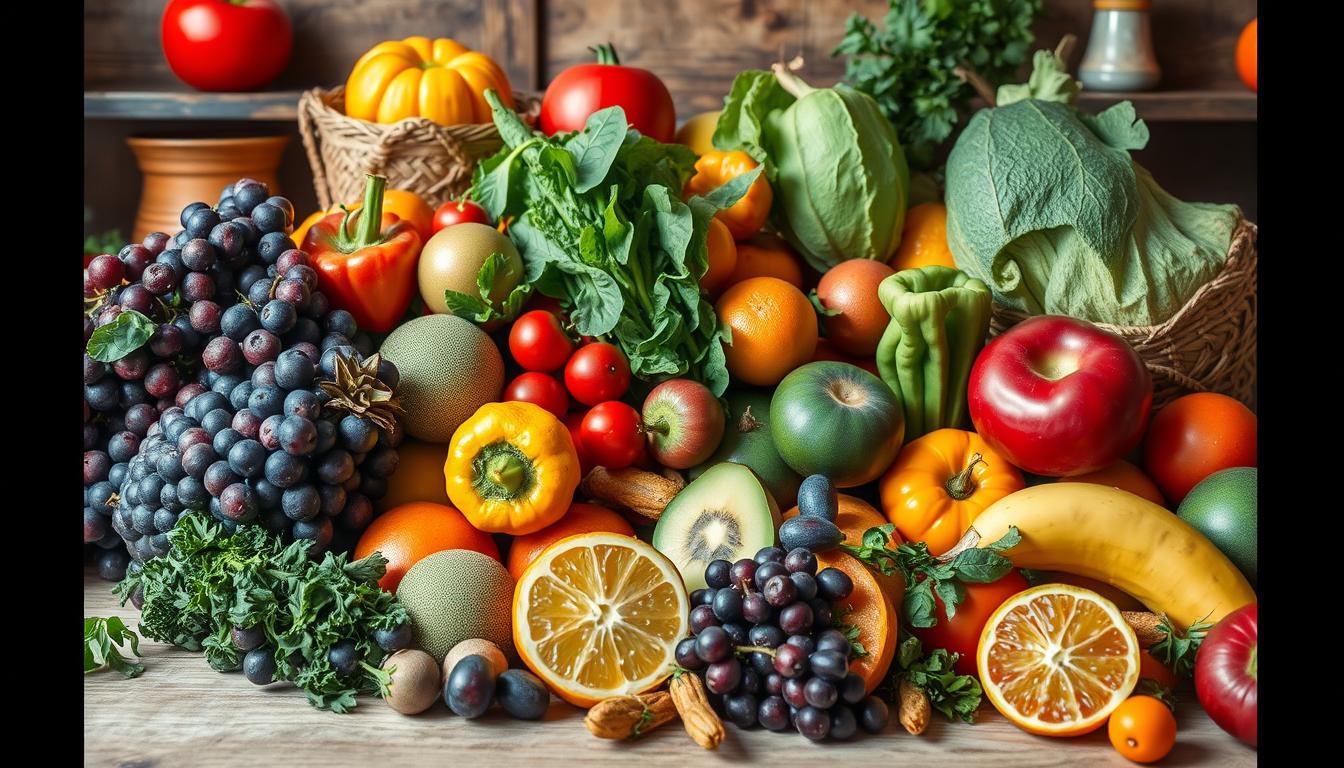Starting a gluten-free journey can feel both exciting and scary. But, with the right help, you can find your way easily. Let’s explore the world of gluten-free living together. You’ll discover its benefits and how it can help you be your best self. Ever thought a gluten-free diet plan could improve your health? It’s not just for those with celiac disease. This guide will teach you how to make smart choices for your health. Key Takeaways Understand the basics of gluten and its health effects Find out where gluten hides and how to avoid it Discover tasty, healthy alternatives to your favorite foods Learn to read labels and shop for gluten-free items Enjoy eating out without worrying about gluten Understanding Gluten and Its Effects on Health Dealing with dietary restrictions can be tough. But knowing about gluten and its health effects is key. Non-celiac gluten sensitivity is a growing concern. It’s when people react badly to gluten but don’t have celiac disease. Learning about gluten and its health impacts helps us make better diet choices. What Is Gluten and Where Is It Found? Gluten is a protein in grains like wheat, barley, and rye. It makes food elastic and holds things together. Gluten is in many foods, but also in sauces, condiments, and some meds. Knowing where gluten is helps those on a gluten-free diet plan. Health Conditions Related to Gluten Sensitivity Celiac disease: An autoimmune disorder where gluten damages the small intestine. Non-celiac gluten sensitivity: Digestive issues, fatigue, and other symptoms from gluten, without celiac disease. Wheat allergy: An allergic reaction to wheat proteins, causing symptoms like hives and swelling. Signs and Symptoms of Gluten Intolerance Knowing the signs of gluten intolerance is important. Symptoms include bloating, pain, diarrhea, and fatigue. Headaches and skin rashes can also happen. Paying attention to how you feel after eating gluten is key. Understanding the nuances of gluten sensitivity is key to managing our health and maintaining a balanced, nutritious diet. Getting Started with a Gluten-free Diet Plan Starting a gluten-free diet plan can seem tough at first. But don’t worry, we’re here to help. We’ll guide you through the first steps to make it easy and stress-free. First, fill your pantry with gluten-free basics. You’ll need things like gluten-free alternatives like rice, quinoa, and gluten-free oats. Always check labels to make sure they’re gluten-free. Now, let’s plan your first gluten-free meals. Focus on fresh, whole foods for the best nutrition. Aim for balanced meals with lean proteins, veggies, and healthy fats. There are many tasty gluten-free alternatives out there. Make shopping easier by downloading the Food Scan Genius app. It lets you scan barcodes to find gluten-free products quickly. It’s like having a gluten-free guide in your pocket! “Transitioning to a gluten-free diet can feel overwhelming, but with the right tools and information, it can be a truly empowering experience.” Adjusting to gluten-free might take a few weeks. But the benefits, like better digestion and more energy, are worth it. Let’s start this journey together and make it easy for you. Essential Foods to Avoid on a Gluten-free Diet Starting a gluten-free diet can seem hard, but knowing what to avoid makes it easier. We’ll look at hidden gluten sources, key ingredients to watch, and how to avoid cross-contamination. Hidden Sources of Gluten Gluten hides in many places, so always check labels. It’s in soy sauce, salad dressings, and even flavored coffee creamers. Processed meats, licorice, candies, and some meds can also have gluten. Common Gluten-Containing Ingredients Wheat, barley, rye, and their derivatives Malt, including malt vinegar and malt flavoring Semolina, bulgur, and couscous Breadcrumbs, croutons, and stuffings Soy sauce, teriyaki sauce, and other condiments Cross-Contamination Risks To keep your diet safe, watch out for cross-contamination. This happens when gluten foods touch gluten-free ones. Shared tools, cutting boards, and oil can all cause gluten exposure. Potential Sources of Cross-Contamination Preventive Measures Shared kitchen equipment Dedicated gluten-free cookware and utensils Communal condiment containers Individual, sealed condiment packets Unclean food preparation surfaces Thorough cleaning and sanitization By knowing where gluten hides, avoiding common ingredients, and preventing cross-contamination, you can enjoy a gluten-free lifestyle. It’s safe and fulfilling. Safe and Nutritious Gluten-free Alternatives Going gluten-free doesn’t mean you have to give up taste or nutrition. There are many tasty and healthy gluten-free options out there. You can find them in grains, flours, snacks, and baked goods. Here are some tasty gluten-free alternatives to try: Quinoa: A versatile, protein-packed grain that can be used in salads, pilafs, and even as a flour substitute. Brown rice flour: A great all-purpose flour alternative that works well in baking and thickening sauces. Almond flour: High in protein and healthy fats, almond flour is a nutritious choice for baked goods. Coconut flour: Packed with fiber and low in carbs, coconut flour is a fantastic option for gluten-free baking. Lentil pasta: Legume-based pastas offer a protein-rich and fiber-filled alternative to traditional wheat-based pasta. For snacks and baked goods, there are many gluten-free products available. You can find everything from crackers and chips to cookies and breads. These alternatives are not only tasty but also packed with nutrients like protein, fiber, and healthy fats. Gluten-free Alternative Nutritional Benefits Quinoa High in protein, fiber, and essential vitamins and minerals Almond flour Rich in healthy fats, protein, and antioxidants Lentil pasta Provides a good source of plant-based protein and fiber By trying these gluten-free alternatives, you can enjoy your favorite foods while staying healthy. With a bit of creativity, you’ll find a world of delicious and nutritious gluten-free options. Reading Labels and Shopping Tips for Gluten-free Products Shopping for gluten-free food can seem hard. But we’re here to help! We’ll teach you how to read labels, understand gluten-free labels, and use the Food Scan Genius app. We’ll also share ways to shop without spending too much. Understanding Certification Labels When you’re looking for gluten-free food, check for trusted labels. Look for the Gluten-Free Certification Organization (GFCO) and the Celiac Support Association (CSA) seals.
Benefits of Organic Food: Your Guide to Healthy Living
Discover the proven benefits of organic food for your health and wellbeing. Learn how choosing organic products can enhance your nutrition and protect the environment
Find Vegan Ingredients with Food Scan Genius Labels
Quickly identify vegan ingredients in labels with food scan genius and make informed choices about your plant-based diet. Shop confidently with instant ingredient analysis
Food Scan Genius: A How-to Guide for Smart Grocery Shopping
Discover how to become a Food Scan Genius with this comprehensive how-to guide for smart grocery shopping. Boost your food savvy now!
Food Scan Genius: The AI Assistant That Keeps You Safe from Top Allergies
Take the stress out of shopping with Food Scan Genius, the AI that identifies top allergens in seconds. Download our free app today!
Delicious Vegetarian Recipes: Your Complete Guide
Discover flavorful vegetarian recipes that will transform your meals. From quick weeknight dinners to gourmet dishes, learn how to create nutritious plant-based favorites
10 Quick & Healthy Breakfast Ideas to Start Your Day
Healthy Breakfast Ideas to Start Your Day Are your mornings a mad dash to get out the door? We hear you! That’s why we’ve curated 10 delicious and nutritious breakfast options. These quick and easy breakfast ideas will power you through your busy day. From protein-packed smoothies to fiber-rich oatmeal bowls, they’re here to make your mornings simpler and healthier. Get ready to wake up and nourish your body with meals that’ll leave you feeling energized and satisfied. Key Takeaways Discover 10 quick and healthy breakfast ideas to start your day right Learn how to fuel your body with a balance of nutrients for sustained energy Find easy-to-prepare breakfast solutions for busy mornings Explore protein-packed and fiber-rich breakfast options Use Food Scan Genius to choose foods that are suitable to your individual dietary needs Get inspired to make your mornings more nourishing and delicious Why a Nutritious Breakfast Matters for Your Health Starting your day with a healthy breakfast is a big win for your health. It gives your body the fuel it needs to tackle the morning. It also helps keep your energy and metabolism steady all day. Impact on Energy Levels and Metabolism A good breakfast, full of protein and complex carbs, keeps your blood sugar stable. This helps your body burn calories more efficiently. People who eat high-protein breakfasts often feel more focused and productive than those who skip breakfast. Benefits for Weight Management Many think skipping breakfast helps with weight loss. But, a healthy balanced breakfast is actually key to keeping weight in check. It helps control hunger and keeps you full, preventing snacking later. Adding nutrient-rich foods to your breakfast can help you maintain a healthy weight. So, kick off your day with a tasty high-protein breakfast that energizes your body and mind. Essential Components of a Balanced Morning Meal Making a healthy breakfast is easy. Knowing the key parts of a nutritious meal helps you make quick and tasty breakfasts. These meals will boost your energy and focus. Let’s look at the main parts of a balanced breakfast. Protein-Packed Powerhouses Protein is key for your body, keeping you full and happy in the morning. Add lean proteins like eggs, Greek yogurt, or nut butters to your breakfast. You can also use tofu or lentils for a plant-based option. Complex Carbohydrates for Sustained Energy Complex carbs from whole grains, fruits, and veggies give you energy all day. Choose items like oatmeal, whole-wheat toast, or fresh berries for your breakfast. They give your body the carbs it needs. Healthy Fats for Nutrient Absorption Healthy fats, like those in avocados, nuts, seeds, and olive oil, help you absorb nutrients. Adding these fats to your breakfast keeps you full and supports your health. Fiber-Rich Additions Fiber is good for your digestion and keeps you full longer. Foods like whole grains, fruits, and veggies are full of fiber. They’re easy to add to your breakfast. Focus on protein, complex carbs, healthy fats, and fiber for a nutritious breakfast. These elements help you make quick, healthy meals. Start your day right with these tips! Eating a balanced breakfast is one of the best ways to start your day off right and set yourself up for success. Healthy Breakfast Ideas for Busy Professionals Mornings can be chaotic, especially for those with busy lives. But, you don’t have to skip a healthy breakfast. We’ve found quick, nutritious options perfect for busy professionals. Make-Ahead Options Start your day with these easy make-ahead recipes. Overnight oats are a great choice – just mix oats, milk, and toppings in a jar the night before. In the morning, you’ll have a tasty, portable breakfast. For more protein, try making breakfast burritos or egg muffins over the weekend. Reheat them during the week for a quick start. And when you shop, use Food Scan Genius, the world’s #1 AI assistant for shoppers with Food Allergies &/ Dietary Preferences. Its better than Yuka due to its integration of AI, larger database and specifically caring for our individual needs! 5-Minute Solutions When time is tight, quick breakfasts are a lifesaver. Smoothies are a great option, blending a meal in minutes. Mix Greek yogurt, fresh fruit, and spinach for a boost of energy. Quick and easy breakfasts like avocado toast or nut butter on whole-grain toast are also fast to make. Portable Breakfast Choices For busy mornings, portable breakfasts are a must. Overnight oats and hard-boiled eggs are perfect for grabbing on the go. Fruit and nut bars or single-serve cottage cheese are also great choices. With a bit of planning, you can have a healthy breakfast even on your busiest days. Quick and easy meals or make-ahead options give you the energy to start your day strong. Protein-Packed Breakfast Bowl Combinations Start your day with a protein-packed breakfast bowl. It will keep you energized and satisfied until lunch. These bowls mix high-quality proteins with nutritious ingredients for a balanced meal. A Greek yogurt breakfast bowl is a great choice. Use creamy Greek yogurt as the base. Add chia seeds or granola for crunch. Top it with fresh berries, honey, and toasted almonds for a delicious meal. For a heartier bowl, try quinoa and eggs. Cook fluffy quinoa and add poached or soft-boiled eggs. Add avocado slices and nutritional yeast for extra protein and flavor. Breakfast Bowl Combination Key Ingredients Nutritional Benefits Greek Yogurt Breakfast Bowl Greek yogurt Chia seeds Granola Berries Honey Almonds High in protein Good source of fiber Packed with antioxidants Quinoa and Egg Breakfast Bowl Quinoa Eggs Avocado Nutritional yeast High in protein Good source of complex carbs Provides healthy fats These breakfast bowls are customizable. Try different proteins like lean turkey or chicken. Add various fruits, veggies, and toppings to make your ideal breakfast. “Breakfast is the most important meal of the day, and these protein-packed bowls are the perfect way to start your morning off right.” Smart Breakfast Meal Prep Strategies Make your mornings easier with quick and easy breakfasts all week. Spend
Scan for Gluten-Free Foods with Ease
Discover reliable gluten-free scanner apps that help you identify safe foods while shopping. Make confident choices and avoid hidden gluten ingredients in everyday products.
Healthy Fats: Essential Nutrients for Optimal Wellness
Did you know not all fats are the same? Some types of healthy fats are key for our health. They help our heart and brain work better. But are you getting the most from monounsaturated fats, polyunsaturated fats, and omega-3 fatty acids in your meals? Let’s explore how these fats can boost our wellness. Key Takeaways Healthy fats are essential for supporting heart health, brain function, and overall well-being. Monounsaturated and polyunsaturated fats, including omega-3 fatty acids, provide numerous benefits. Incorporating the right balance of healthy fats into your diet can make a significant difference in your overall health and wellness. Debunking common myths about fats and understanding their role in metabolism and body functions. Practical tips for selecting, storing, and cooking with nutrient-dense healthy fat sources. Understanding the Role of Healthy Fats in Your Diet Healthy fats are key to our health. Let’s explore how they help our bodies work well. The Science Behind Fat Metabolism Our bodies can break down different fats, like healthy fats. This includes monounsaturated fats and polyunsaturated fats. They turn into energy that powers us every day. How Fats Support Body Functions Healthy fats do more than just give us energy. They help us absorb vitamins, keep our hearts and brains healthy, and help with hormones. Eating the right fats can greatly improve our health. Debunking Common Fat Myths Many people still think all fats are bad. But, not all fats are harmful. Knowing the difference helps us choose better fats for our health. “Fats are not the enemy. In fact, they are essential for our bodies to function properly.” Accepting the importance of healthy fats is a big step towards better health. By understanding the science and clearing up myths, we can make better choices for our bodies. The Different Types of Healthy Fats It’s key to know about the different healthy fats we can eat. Let’s look at monounsaturated fats, polyunsaturated fats, and omega-3 fatty acids. Each has special benefits for our health. Monounsaturated Fats: The Heart-Healthy Option Monounsaturated fats are great for our hearts. They help keep cholesterol levels in check. You can find them in foods like avocados, olive oil, and nuts. Adding them to your meals can make your diet healthier. Polyunsaturated Fats: The Multitaskers Polyunsaturated fats are very helpful. They reduce inflammation and support brain and cell growth. You can get them from fatty fish, seeds, and some plant oils. Omega-3 Fatty Acids: Nature’s Brain Boosters Omega-3 fatty acids are known for their many benefits. They’re good for the heart and brain. You can find them in fatty fish, nuts, and seeds. Knowing about each type of healthy fat helps us make better choices. Eating a mix of these fats can lead to a healthier lifestyle. Essential Omega-3 Fatty Acids: Benefits and Sources Omega-3 fatty acids are key to a healthy diet. They offer many benefits for our health. Let’s explore the science behind them and how to add them to our meals. EPA and DHA Benefits Eicosapentaenoic acid (EPA) and docosahexaenoic acid (DHA) are the top omega-3s. They help our heart, brain, and reduce inflammation. Eating more EPA and DHA can lower heart disease risk, improve brain function, and boost mood. Plant vs Marine Sources Omega-3s are found in plants and sea creatures, but they differ in type and amount. Fatty fish and fish oil are rich in EPA and DHA, the best types. Chia seeds, flaxseeds, and walnuts have ALA, which our body can convert to EPA and DHA, but not as well. Daily Recommended Intake The daily omega-3 intake varies by age, gender, and health. Adults should aim for 1,100-1,600 mg of EPA and DHA daily. Eating foods rich in omega-3s helps meet this goal and supports our health. Monounsaturated Fats: Heart-Healthy Champions Monounsaturated fats are superheroes for a healthy heart. They support heart function and offer many benefits for our well-being. Let’s explore how these fats can be part of our daily lives. These fats, found in avocados and olive oil, lower bad LDL cholesterol and raise good HDL cholesterol. This balance is key for a healthy heart and lowers heart disease risk. They also help control blood pressure and improve insulin sensitivity, crucial for heart health. Avocados are packed with monounsaturated fats, about 15 grams in a medium fruit. They’re great in salads, sandwiches, and even desserts. Olive oil, a key part of the Mediterranean diet, is also rich in these fats. Used in moderation, it adds flavor and heart health benefits to dishes. Adding monounsaturated fats to your diet is easy and beneficial for your heart. Enjoying avocado salads or olive oil on veggies is a step towards a healthier heart. Monounsaturated fats are the unsung heroes of the nutrition world, quietly working to improve our heart health and overall well-being. So, include heart-healthy monounsaturated fats in your meals. Your body and heart will appreciate it! Power-Packed Nuts and Seeds for Optimal Health Nuts and seeds are tiny powerhouses of nutrition. They are full of healthy fats, fiber, and essential vitamins and minerals. These little gems can greatly improve our health and wellness. Let’s explore the top nutrient-dense options, learn about portion sizes, and discover storage tips to keep them fresh. Top Nutrient-Dense Options Almonds: Rich in vitamin E, magnesium, and healthy fats. Walnuts: An excellent source of omega-3 fatty acids, helpful for brain health. Chia seeds: Loaded with fiber, protein, and antioxidants. Pumpkin seeds: High in zinc, magnesium, and plant-based omega-3s. Cashews: Creamy and delicious, providing copper and magnesium. Portion Control Guidelines When it comes to nuts and seeds, portion control is key. A serving size is typically around 1/4 cup or a small handful. It’s important to be mindful of your portions, as these nutritious snacks can be high in calories. Enjoy them as a healthy addition to your diet, but remember to practice moderation. Storage Tips for Maximum Freshness To keep your nuts and seeds at their peak, proper storage is essential. Store them in an airtight container
Plant-Based Eating: A Complete Guide to Getting Started
Discover the essentials of plant-based eating with our comprehensive guide. Learn tips, meal planning strategies, and nutritional insights to successfully transition to a healthier lifestyle

